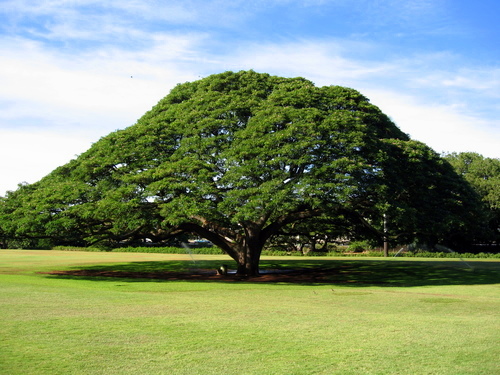
“Blessed is the man that trusteth in the LORD, and whose hope the LORD is.
For he shall be as a tree planted by the waters, and that spreadeth out her roots by the river, and shall not see when heat cometh, but her leaf shall be green; and shall not be careful in the year of drought, neither shall cease from yielding fruit.”
Psalms 17:7, 8
THE USEFULNESS OF TREES.
ALL trees are useful in some way or other;
but then, there are some trees every part of which is useful. The cocoanut tree is one of the most useful trees in the world. Its nuts afford oil, a kind of milk, and fruit. From the shell of the nut are made cups, bowls, and bottles. The bark of the tree is made into twine, and cordage, and cloth, and mats. The young buds are eaten as a vegetable. From the sap, sugar is made. The leaves are used for sails, for boats, for sacks, for baskets, and thatch for cottages; and when burned, their ashes yield potash, which is useful for many things. The wood of the tree is used for water-troughs, canoes, and other purposes.
But the bamboo tree, which grows in China, is more useful even than the cocoanut tree. It grows to the height of about eighty feet, and bears neither blossom nor fruit; the leaves are small and narrow, but many of the stems are thicker than a man's arm. In building, its largest stems are used for pillars, rafters, and planks; its leaves for thatching the roof, and the smaller fibres for matting for the floor. In the homes of the Chinese it is made into bedsteads, tables, chairs, and other articles of furniture; also into umbrellas, hats, musical instruments, baskets, cups, brooms, soles of shoes, pipes, bows and arrows, sedan-chairs, and wicks of candles. Its fine fibres are made into twine. Its shavings serve for stuffing pillows; its leaves are used as a cloak in wet weather, called "a garment of leaves;" and the chopsticks, which the Chinaman uses instead of a knife or a fork, are made out of bamboo stems. The tender shoots of this tree are boiled and used as a vegetable;
the pulp is formed into paper, and the pith into pickles and sweetmeats.
It is used on the water as well as on land. Boats, floats, sails, cable, rigging, fishing rods, and fishing-baskets are made of it. It is as useful to the farmer as it is to the sailor. He depends on it for carts, wheel-barrow; plows, water-pipes, wheels, and fences, and many other things. And yet the half is not told about this wonderful tree.
It is used everywhere, for everything—in the houses, in the fields, on water and on land, in peace and in war. What a lesson of usefulness this tree teaches us! And so it is true that every tree we see is a preacher to us. It bids us follow its example, and make ourselves useful.
Kindergarten Magazine.